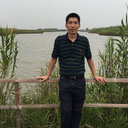Differences in soil properties and bacterial communities between the rhizosphere and bulk soil and among different production areas of the medicinal plant Fritillaria thunbergii.
Kľúčové slová
Abstrakt
To explore rhizosphere effects, geographical differences and their effects on the bacterial community associated with the geoherb Fritillaria thunbergii, some physicochemical properties of soil samples (3 sampling sites × 2 habitats (rhizosphere and bulk soil)) were measured and the soil bacterial community detected by PCR-denaturing gradient gel electrophoresis (DGGE). Among the three regions, soil pH varied between 4.48 and 7.73 indicating that F. thunbergii could grow both in acid and slightly alkaline soil. As the authentic Dao-di producing area, Ningbo showed the highest soil quality with the highest content of organic matter (OM) (2.46%), phosphatase (268 mg kg(-1) 24 h(-1)) and urease activity (1481 mg kg(-1) 24 h(-1)). In comparison with the bulk soil, pH, organic carbon content, and phosphatase and urease activities were all lower in the rhizosphere, suggesting that the roots may secrete some unique metabolites in root exudates. Statistical analyses showed that soil properties of Ningbo and Panan in Zhejiang province were more similar to each other than those in Nantong in Jiangsu province. In addition, PCR-DGGE analysis showed that main bacterial population identified in F. thunbergii was proteobacteria (18 bands, 55%), acidobacteria (4, 12%), actinobacteria (4, 12%) and bacterioidetes (6, 18%). Overall, soil properties and microbial communities varied not only between the rhizosphere and bulk soil but also among the three regions. We suggest that the plant, together with the soil properties, cooperatively shape the structure of the rhizosphere bacteria, and that the soil properties have a close relationship with the geoherbalism of F. thunbergii.


